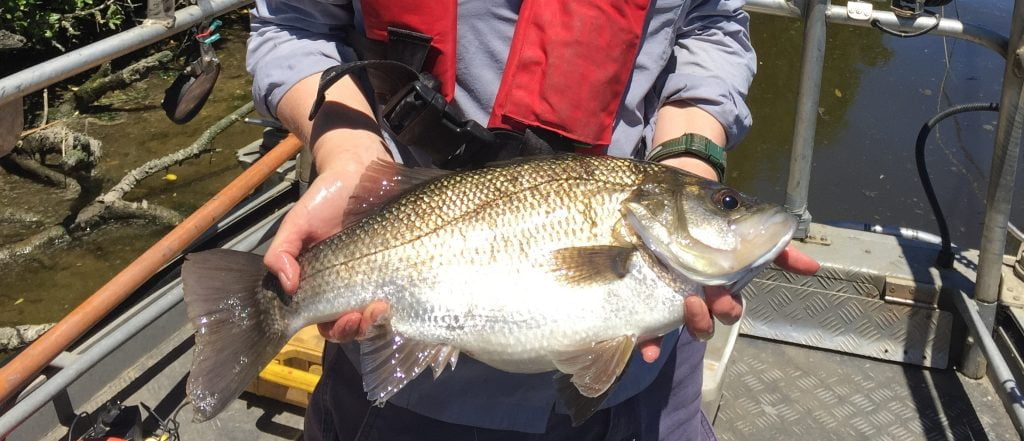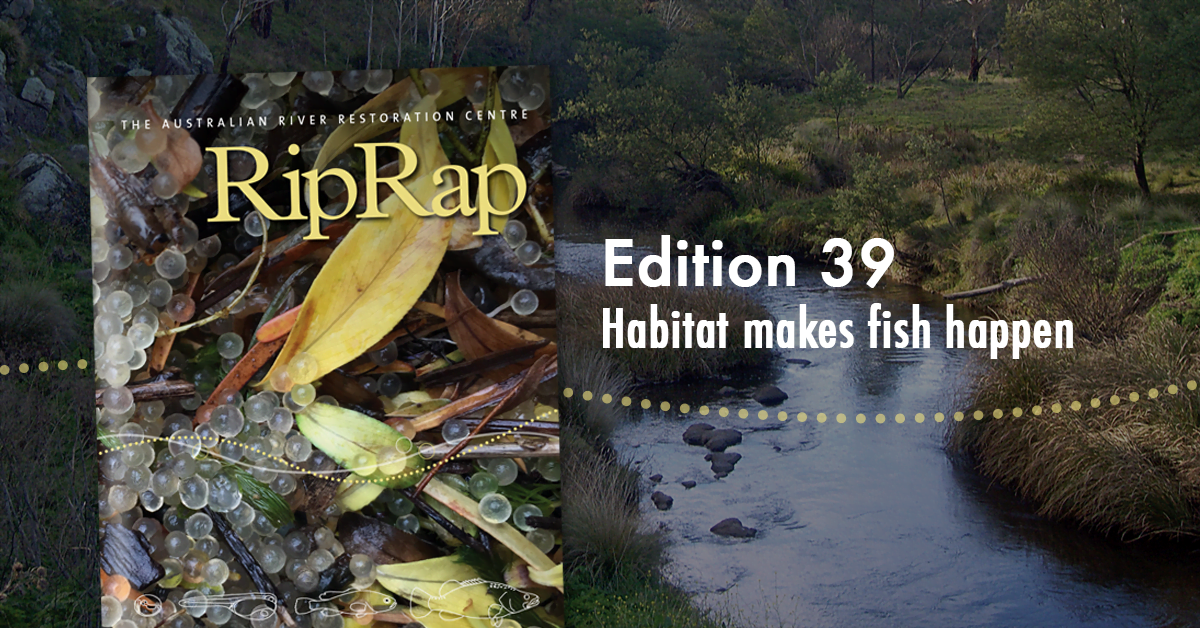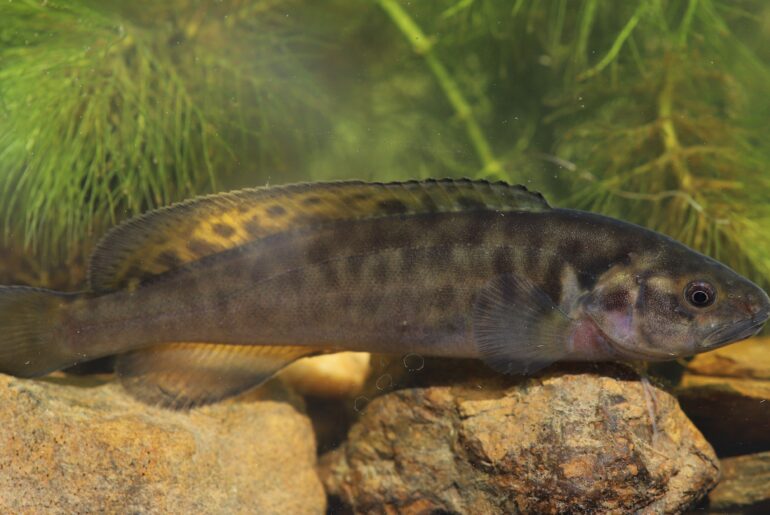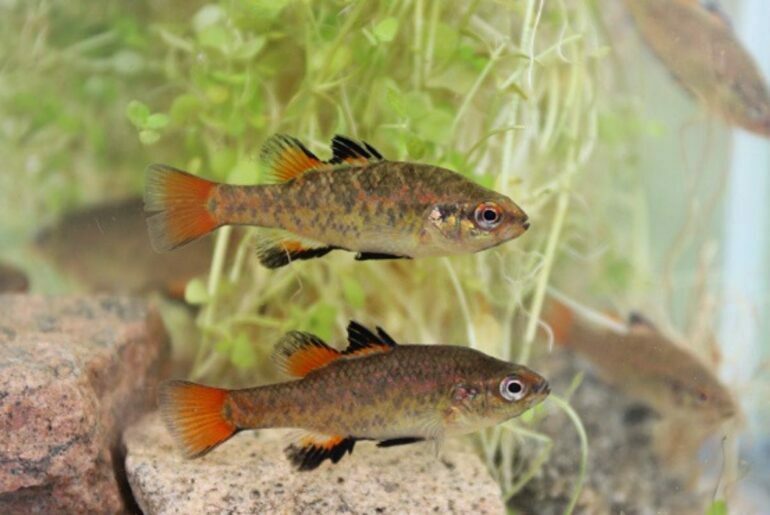Recreational fishing is a popular pastime enjoyed by 838,000 Victorians each year who contribute $7.1 billion per annum to the state’s economy. Whether it’s fresh water, estuarine or marine; boat or bank-based fishing; bit, lure, spear or fly fishing – recreational fishers are passionate about their sport, fish and the environment. They understand the interconnections between land and water, and the importance of healthy aquatic ecosystems and habitats to support vigorous fish populations.
Fish habitat: What is it?
Healthy habitats provide fish with everything they need to complete their life cycles: shelter, food, breeding areas and migration opportunities. This includes diverse and complex structures, such as plants, logs and rocks in and around the water; good water quality and the right flow regimes. Habitat connectivity is particularly important for fish species that migrate large distances, sometimes between fresh and salt water, as part of their life cycle. It also allows fish to recolonise areas after lean times such as drought.
There have been massive changes to our catchments and waterways through land clearing, urban development, water extraction, clearing riverbank and instream vegetation, barrier construction (e.g. road crossings and weirs), altered water quality and introduced species. One of the simplest, most effective things we can do to support great native fish populations and recreational fisheries, now and into the future, is to maintain areas with healthy fish habitats and improve the condition of degraded waterways. On-ground works programs are an important step toward improvements and include a range of activities from installing fishways, managing weeds, reinstating flows and cleaning up litter. These actions help improve the condition of instream and riparian habitats by increasing habitat complexity and diversity. This benefits fish by providing shelter and refuge areas, food sources, spawning and nursery areas, and markers for territorial or migratory species.

Working together for healthier fish habitats and better fishing
Victorian recreational fishers are becoming more interested, informed and active as advocates for improving fish habitat. In a 2009 survey, Victorian recreational fishing licence holders voted ‘Repairing where fish live’ as the most important way to improve recreational fishing. In a subsequent survey by Fisheries Victoria in 2012, many people indicated they were interested in participating in projects to improve fish habitat. More recently, ‘Improved habitat’ was again noted by Victorian anglers as a factor which would increase their fishing participation.
The productivity of fish populations is highly dependent on the environmental condition of waterways, so fisheries and waterway management needs to be integrated. Recreational fishers, waterway managers and other resource management agencies share mutual interests in improving waterway condition to enhance native fish populations and recreational fishing opportunities. This has led to significant investment directed towards common goals to enhance habitat. In 2013/14, half ($800,000) of Victorian recreational fishing licence fees funded fish habitat related projects. This was leveraged by $1.2 million in co-contributions from Victorian catchment management authorities (CMAs).

Improving fish habitat: Victorian Coastal Fish Habitat Hotspots project
In mid-2013 the ‘Victorian Coastal Fish Habitat Hotspots’ project was initiated to engage the community in improving fish habitat in coastal waterways in Victoria. This project raises awareness and encourages recreational fishers’ involvement in improving fish habitat, while undertaking on-ground works in selected estuaries along Victoria’s coast. The project fosters ownership and protection of fish habitat by recreational fishers and local communities.
Five ‘hotspots’ are being developed in estuaries of the Merri, Gellibrand, Werribee and Tarwin Rivers, as well as the estuaries flowing into Gippsland Lakes (Mitchell, Nicholson and Tambo Rivers). Various on-ground works are being completed to benefit fish, including popular recreational species Estuary perch, Black bream, Mullet, and threatened species, Australian grayling, Tasmanian whitebait and Australian (or Tasmanian) mudfish.
In the Merri Estuary near Warrnambool, wood and rock structures have been installed in the river channel, while woody weeds have been removed from riverbanks and native vegetation is being replanted. Similarly, in the Gellibrand Estuary near Princetown, instream woody habitat has been improved by installing 35 root clusters and lattice log boxes at 10 locations. Native shrubs and trees have also been planted along riverbanks. In the Werribee Rier, three new fishways have been built to facilitate fish passage. In the Tarwin Estuary and estuaries flowing into Gippsland Lakes, on-ground works to rehabilitate riparian zones has been the priority. Fencing has been erected to restrict stock access, native vegetation is being replanted and riverbanks are being stabilised with rock banking.

Linking with the on-ground works at each ‘hotspot’, several community events have been held to engage people about the importance of healthy waterways, as well as to learn and share knowledge and experiences in habitat rehabilitation. Recreational fishers and other interested stakeholder groups including Landcare, Estuarywatch, Waterwatch and landowners have participated in these events which have ranged from information nights and forums, to field visits and demonstration days. Topics have focused on local interests relating to fish or fish habitats. People thoroughly enjoy these opportunities to learn and network with others in their local region that share common interests in the environmental condition of their local waterway.
Overall, there are huge benefits from government, recreational fishers and other community stakeholders working together to improve the condition of waterways – there are shared goals, shared resources, a shared workload, shared recognition and shared achievements.
Working together fosters local ownership, and shared understanding of why improvements to waterways are beneficial and what actions are needed to achieve particular outcomes. These initiatives provide an important start to strengthening and expanding such productive, working partnerships. Collaboratively, we can care for our catchments and improve the condition and connectivity of fish habitats. Healthier and resilient aquatic environments mean healthier native fish, and better fishing opportunities for the future.
This collaborative project is undertaken by the Arthur Rylah Institute; coastal CMAs; Melbourne Water; the Department of Environment, Land, Water and Planning; Fisheries Victoria, the Australian Trout Foundation; VRFish and Native Fish Australia, and is jointly funded by the Australian Government, Victorian recreational fishing licence fees and in-kind contributions by project partners.
To read this and other great stories like it, you can purchase or download a copy of RipRap 39 magazine. A pdf version of this story is also available to download here.




